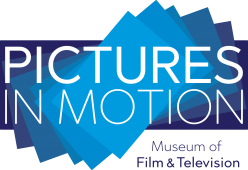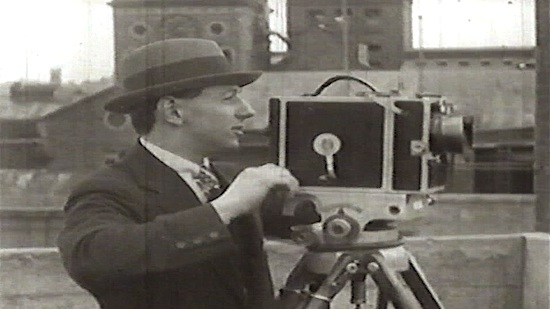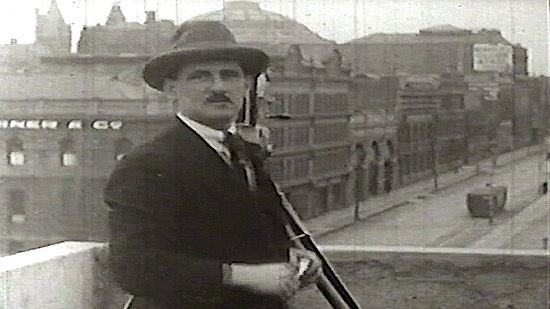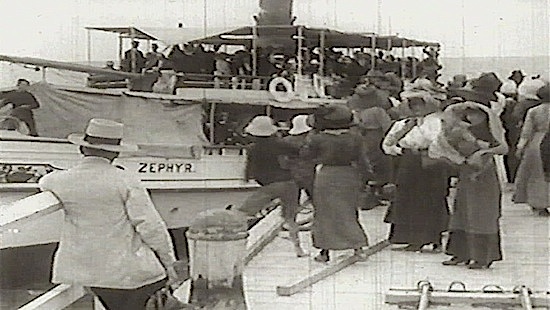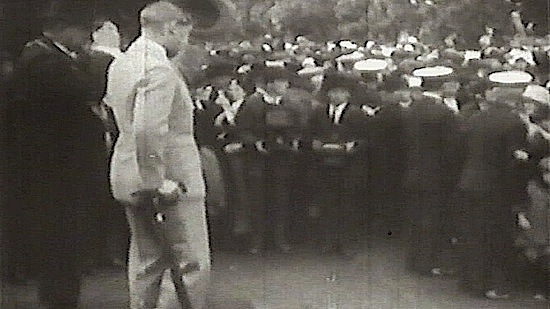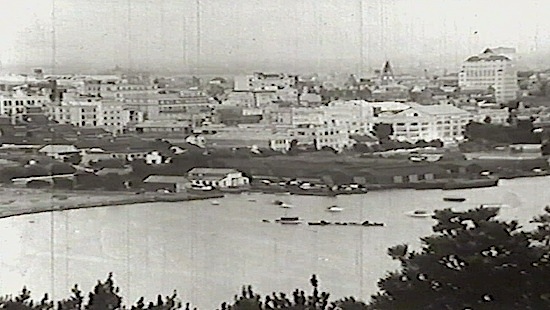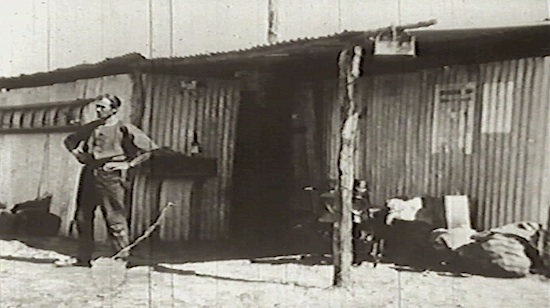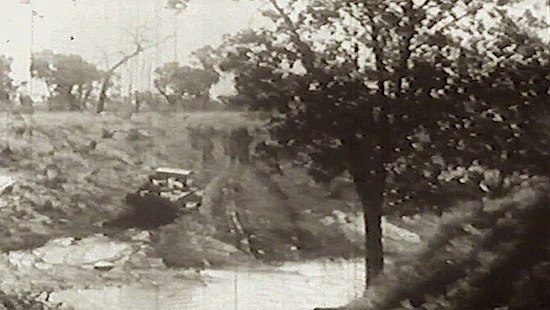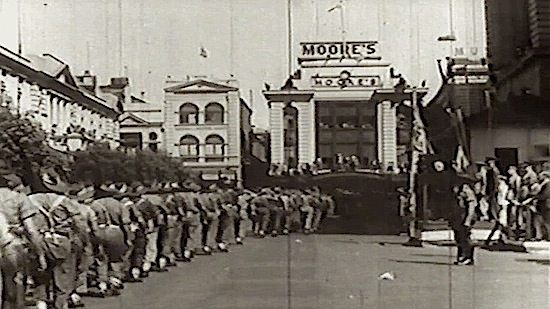The film ‘The Distant Lens’ is a Western Australian film treasure that includes early motion pictures of the State from about 1905 to 1950. ‘The Distant Lens’ is narrated by Alan Cassell with additional commentary by prominent members of Perth’s acting community. Directed by Glenda Hambly and produced by Paul Barron and Owen Patterson, the 50 minute black and white documentary was made by the Perth Institute of Film and Television (PIFT) which is now the Film and Television Institute of Western Australia (FTI). The National Film & Sound Archive of Australia distributes the film.
Another film, ‘Age of Invention’, contains archival film and photographs from around the turn of the twentieth century when new inventions were affecting people’s lives.
A number of veteran cinematographers contributed footage to this production, including: H.R. Balfour, R.Davidson, D.Eastman, C. Hendry, A.E. Higgins, W. McLean, Alex McVee, Leonard Corrick, D. Dease, Leith Goodall, S. Gore, Fred Murphy and L.O. Siggs.
Still photos were provided by Ken Alexander, M. Brown, J.P. (John Philip) Gabbedy, Barrie King, Arthur Stiles, Clarence Patrick (Paddy) Baker, D. Dease, Allan Jones and A. Orloff.
The film begins with early street views taken when moving pictures were in their infancy. We see the first commercial ferry to service the route between Perth and Rottnest Island, the steam driven Zephyr. Theres a 1914 Busy Bee to repair the main road between Cottesloe and North Fremantle.
The film makers made the effort to recorded the special events as well as the everyday concerns. The principle industry in WA was primary production and the most important event on the calendar was the Perth Royal Show. Much of this was photographed by Leonard Corrick, the leader of a troop of vaudeville artists, who toured Australia. He also covered sporting events.
A visit to The South Perth Zoo is also featured, starting with shots of the old steam ferries that plied the Swan River. Trips to the beach show a time well before scant bathing attire. There were beach shelters to shade the entire family, with people dressed to the hilt in large hats, long dresses and well covered bathing costumes. Much ceremony was attached to surf life saving demonstrations, whilst the Salvation Army was there to save souls, should the public succumb to the wickedly brief dress of the daring bathers.
Bands with marching and parades were most popular in an era before radio, television or the internet. People would grasp every opportunity and vantage point to gain a view. The rare occasions in which Royalty visited marked something very special for a populace, who were far and away from their beloved motherland.
Perth city streets are shown with an architecture more similar to Fremantle, which has largely escaped the wrecking ball and large scale demolition. There’s an absence of glass tower skyscrapers and an abundance of vintage vehicles, trams, the occasional horse drawn cart and visible power lines. Many of the cars had soft canvas tops rather than the hard tops of today.
It was a time when concrete troughs were on street corners for watering the horses and men walked the streets with shovels to pick up the manure as cars were still a luxury imported item.
Footage is shown of the Swan River flooding and its impact on the low-lying areas of South Perth in 1926.
The fashions were somewhat quaint by today’s standards. In fact people often overdressed, wearing furs and suits in our warm climate, when they were better suited to the colder streets of London or Paris.
The early attempts of Fred Murphy to emulate Hollywood is shown, even though his silent movie efforts were a decade out of date, with the sound era fast approaching. We’re given an introduction to Perth’s first picture houses. Though only a small sample of the early theatres, it provides imagery of a number of early venues. Spencer’s Pictures, at the foot of William Street, at the location of the Esplanade Gardens, which was a landmark in the city since 1909, also doubling as a boxing venue.
By 1908, the Melrose Gardens in Murray Street was showing films provided by the British exhibitor T.J. West (West’s Pictures), with the venue turned into a barn like establishment in 1911, to later be rebuilt as the prestigious Prince of Wales Theatre (1922). Followed by the extravagant dream palaces such as the Ambassadors (1928) in Hay Street and the Capitol (1929) in William Street, which sprung up on the site of Spencer’s Esplanade Picture Gardens
Meanwhile, travelling picture show men such as Paddy Baker took the movies to the rural areas.
The story of the group settlements in the South West is told. Under this scheme British settlers were to work in small groups to develop a number of dairy farms, in an attempt to address Western Australia’s reliance on imported dairy products. This was poorly conceptualised and executed, proving a dismal failure and subjecting the settlers to enormous hardship, exacerbated by the great depression, following the Wall Street Crash of 1929
Pioneering transportation methods employed in the North West are examined, from donkey and camel power until the advent of the automobile, which needed better roads, to the introduction of air flights.
With the outbreak of the Second World War, technology made enormous advances, which was reflected in the new ways the public were informed.
The filmmakers turned their attention to news reporting, which continued as a popular cinema feature until the introduction of daily television news bulletins. Southern Cross Newsreel’s ‘Westralian News’ being one, with cine cameraman Leith Goodall, the father of television veteran news cameramen Peter and Michael Goodall.
The Distant Lens concludes with glimpses of life in Perth during the 1940’s. A time when Perth was still little more than a large country town.
